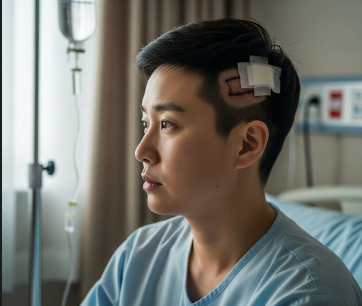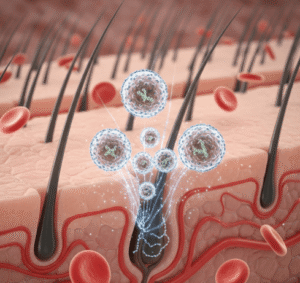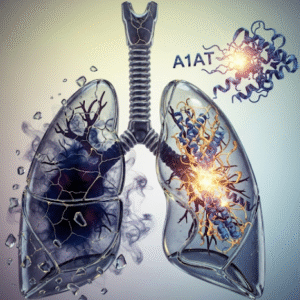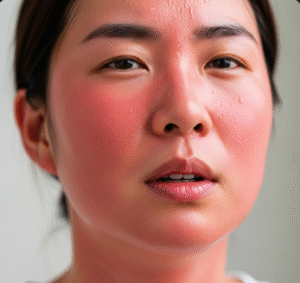Overview
Gliomas are a group of brain tumors that originate in the glial cells—the supportive cells of the nervous system that surround and protect neurons. These tumors are among the most common types of primary brain cancers, accounting for about 30% of all brain and central nervous system tumors. Gliomas vary widely in their growth patterns, aggressiveness, and treatment response, ranging from slow-growing low-grade gliomas to highly aggressive glioblastomas.
While gliomas can occur at any age, they are more frequently diagnosed in adults. Symptoms depend on the tumor’s size, location, and growth rate, and they often affect cognitive, sensory, or motor functions. Advances in imaging, surgery, and targeted therapies—especially in South Korea—have improved both survival and quality of life for patients.
What is Glioma?
A glioma is a type of tumor that develops from glial cells, which include:
- Astrocytes → leading to astrocytomas (including glioblastoma).
- Oligodendrocytes → causing oligodendrogliomas.
- Ependymal cells → resulting in ependymomas.
Gliomas are classified by the World Health Organization (WHO) into grades I–IV based on their aggressiveness:
- Grade I: Slow-growing, often curable with surgery (e.g., pilocytic astrocytoma).
- Grade II: Low-grade but tend to recur and progress to higher grades.
- Grade III: Anaplastic gliomas, more malignant and invasive.
- Grade IV: Glioblastoma multiforme (GBM), the most aggressive form.
Symptoms
Gliomas can cause a wide range of symptoms depending on their location in the brain and rate of growth.
Common symptoms include:
- Persistent headaches, often worse in the morning
- Seizures (new onset in adults is a red flag)
- Nausea and vomiting
- Fatigue and drowsiness
Neurological symptoms may include:
- Weakness or numbness in limbs
- Difficulty with speech or comprehension
- Vision or hearing problems
- Balance and coordination issues
- Personality or behavioral changes
- Memory loss or confusion
Causes
The exact cause of gliomas is not fully understood. They result from uncontrolled growth of glial cells due to genetic and molecular changes.
Possible contributing factors include:
- Genetic mutations: Changes in IDH1/IDH2, TP53, or EGFR genes are strongly linked.
- Inherited genetic syndromes: Such as Li-Fraumeni syndrome, Turcot syndrome, or neurofibromatosis.
- Chromosomal abnormalities: Co-deletion of 1p/19q in oligodendrogliomas influences tumor behavior.
- Radiation exposure: Previous therapeutic radiation to the head increases risk.
- Unknown factors: In most cases, no clear external cause is identified.
Risk Factors
Several factors can increase the likelihood of developing a glioma:
- Age: More common in adults between 45–65 years.
- Gender: Slightly more frequent in men.
- Family history: Rare but possible inherited risk.
- Ionizing radiation exposure: Medical treatments or accidental exposure.
- Immune system weakness: Individuals with compromised immunity may be more vulnerable.
Complications
Gliomas can lead to serious health issues due to their infiltrative growth in sensitive brain tissues.
- Neurological deficits: Permanent weakness, speech difficulties, or vision problems.
- Cognitive decline: Memory loss, reduced concentration, and personality changes.
- Seizures: Ongoing epilepsy requiring medication.
- Brain swelling (edema): Can cause life-threatening pressure increases.
- Treatment complications: Surgery, chemotherapy, and radiotherapy may affect brain function.
- Recurrence: Even after treatment, gliomas frequently return, especially high-grade forms.
- Reduced life expectancy: Particularly in aggressive tumors like glioblastoma.
Prevention
There is currently no guaranteed way to prevent gliomas because their causes are not fully understood. However, certain measures may help lower risks or support early detection:
- Avoid unnecessary radiation exposure: Especially to the head and neck.
- Genetic counseling: For families with inherited cancer syndromes.
- Healthy lifestyle: A balanced diet, regular exercise, and avoiding smoking and excessive alcohol may support overall brain health.
- Regular medical check-ups: Individuals with family history or previous head radiation should undergo monitoring.
Treatment Options in Korea
South Korea is internationally recognized for its advanced neurosurgery and cancer care programs. With cutting-edge technology, experienced specialists, and integrated patient care, Korean hospitals offer some of the best glioma treatments in Asia.
1. Diagnosis & Evaluation
- MRI with contrast: Gold standard for brain tumor imaging.
- Functional MRI & PET scans: To assess brain activity and tumor metabolism.
- Biopsy & molecular profiling: To classify tumor type, grade, and genetic markers.
- Neurocognitive testing: To measure impact on brain function.
2. Surgical Treatment
- Maximal safe resection: Aim is to remove as much tumor as possible without damaging vital brain areas.
- Neuronavigation systems & intraoperative MRI: Allow surgeons to precisely map tumor boundaries.
- Awake brain surgery: Used for tumors near critical speech or motor areas.
- Robotic-assisted neurosurgery: Increasingly used in Korean hospitals.
3. Radiation Therapy
- External beam radiotherapy: Standard post-surgery treatment.
- Stereotactic radiosurgery (Gamma Knife, CyberKnife): Delivers high precision radiation to residual or inoperable tumors.
- Proton therapy: Available in select Korean hospitals, minimizing damage to surrounding brain tissue.
4. Chemotherapy & Targeted Therapy
- Temozolomide (TMZ): Standard drug for high-grade gliomas, often combined with radiation.
- Bevacizumab (Avastin): Targets blood vessels to slow tumor growth.
- Clinical trials: Many Korean institutions participate in global studies testing new targeted therapies and immunotherapies.
5. Supportive Care
- Anticonvulsants: To manage seizures.
- Steroids (dexamethasone): To reduce brain swelling.
- Rehabilitation programs: Physiotherapy, speech therapy, and cognitive training.
- Psychological support: Counseling for patients and families coping with long-term illness.
6. Why Korea for Glioma Treatment?
- Hospitals like Seoul National University Hospital, Asan Medical Center, and Samsung Medical Center are leaders in neuro-oncology.
- Advanced surgical technology, including awake craniotomy and intraoperative MRI.
- Access to proton therapy centers.
- Multidisciplinary care teams (neurosurgeons, oncologists, radiologists, rehabilitation experts).
- International patient departments with English-speaking support.
Conclusion
Gliomas are among the most challenging brain tumors due to their invasive nature and high recurrence rate. Symptoms often affect essential brain functions, and while treatment is complex, modern therapies significantly improve survival and quality of life.
South Korea stands out as a global destination for glioma care, combining world-class neurosurgery, advanced radiotherapy, and innovative research into targeted therapies. With multidisciplinary teams and state-of-the-art facilities, patients can receive highly specialized, personalized treatment.
For patients and families facing a glioma diagnosis, timely intervention and expert care—especially in a medical hub like Korea—can make a profound difference.













